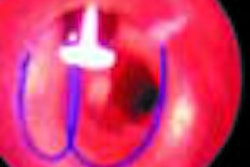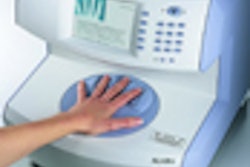VIENNA - A new generation of digital radiography/fluoroscopy systems can reduce patient radiation exposure in double-contrast barium enema studies by as much as 50%, while producing better image quality, according to a study presented Friday at the European Congress of Radiology.
Barium enema fluoroscopy studies can contribute as much as 15% of the collective dose that patients receive from diagnostic radiology, according to the presenter of the study, Dr. Kristina Lomoschitz at Danube Hospital in Vienna. New technologies, such as pulsed fluoroscopy, offer the ability to reduce this dose significantly, she said.
Danube researchers conducted the study to quantify the dose reduction possible with the new units. The researchers compared a new R/F system, an Iconos R2000 with a Fluorospot TOP digital module (Siemens Medical Solutions, Erlangen, Germany), to an older Siemens R/F system, a Siregraph D.
Beginning in February 2000, barium enema studies were performed on the new system with a standard double-contrast technique in 70 patients and were compared with a control group of 35 patients examined with the older unit. Beam filtration and kVp were similar with both systems. Pulsed fluoroscopy was employed with the new unit, a capability not available on the older system.
The Danube researchers found the pulsed fluoroscopy mode to be an excellent tool for reducing radiation dose. With the Iconos R2000 set at three pulses per second, researchers achieved a 90% dose reduction compared to continuous fluoro. With the system set at 7.5 pulses per second, a 75% dose reduction was achieved.
Overall, the researchers reported that the new system registered a median dose area product (DAP) that was 56% lower than the older R/F unit, Lomoschitz said: radiation levels of 580 cGy cm were recorded with the new system, compared with 1,310 cGy cm in the control group.
Image quality was also judged superior with the new-generation model, she said. The most crucial difference is that the Iconos R2000 produces 10-bit gray-scale images, compared with 8-bit images on the Siregraph D. The new system is also capable of 2K x 2K imaging, although only 1024 x 1024 resolution was employed on both models for the study.
"With a new state-of-the-art [digital R/F] system, substantial dose reduction of 50% can be achieved, with good contrast and even better image quality," Lomoschitz said.
By Brian Casey
AuntMinnie.com staff writer
March 3, 2001
Click here to post your comments about this story. Please include the headline of the article in your message.
Copyright © 2001 AuntMinnie.com

















